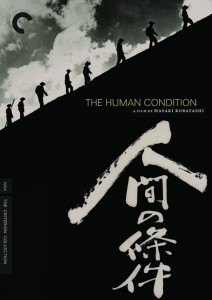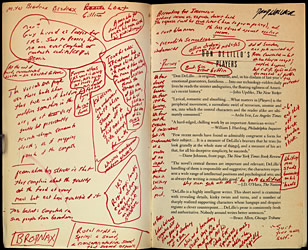
Lauren and I just finished watching “The Human Condition”, a 10 hour Japanese film that shows what can happen to human ideals in a less-than-ideal world.
It was deeply moving and I highly recommend it, but be warned: It takes you into so many bleak emotional places that it makes “Dancer in the Dark” feel like “Singin’ In The Rain” by comparison.
Maybe that’s why I felt like I wanted to share a few “booster shots of humanity” with you tonight… so here are some items that I came across this week which I think showcase the better aspects of our nature.
“Faces of the Tsunami”
The main character in “The Human Condition” rails against the suffering of those around him while his peers stand around and say “shikata ga nai” (a Japanese idiom for “it can’t be helped”). Writer MIN JIN LEE examines what “shikata ga nai” means to survivors of last year’s devastating disasters in Japan, but the accompanying “Faces of the Tsunami” photo series by photographer DENIS ROUVRE is the part that really captured me. It is a look into the actual human faces of the tragedy and I think you’ll come away from it inspired by the strength and dignity that you see.
What The Tools Are For
There were three bits of technology writing that I saw this week which I thought went beyond the usual “nuts-and-bolts” fare and into far more interesting territory: looking at the human purposes for the tools we use.
GABE WEATHERHEAD wrote this excellent piece which starts off as a straightforward software review before lunging into more personal territory. Regular readers know I am a fan of Gabe’s work and posts like this are a good example of why.
BRETT KELLY shared his own approach to preserving important memories and, in the process, actually shared some of his most important memories with his readers.
Finally, PATRICK RHONE‘s story of his daughter’s first exposure to American commercial television clarified the problems with the TV industry’s business model in a way that some overly-wonky analysis would have likely clouded.
By the way, people who want to show support for humanistic tech writing like this should use the Macdrifter donation page, buy a copy of “Evernote Essentials” or “Keeping it Straight”, or subscribe to the Read & Trust Premium Newsletter (which regularly features Brett and Patrick’s writing).
“Two Splendid Journalists”
It has been an especially bad month for American journalism — first from the loss of ANTHONY SHADID and now with news of the death of MARIE COLVIN. David Remnick wrote a moving tribute to Colvin for the New Yorker and Sherry Ricchiardi for the American Journalism Review pays her respects to both Shadid and Colvin in a piece called “Remembering Two Splendid Journalists”. In it, she shares personal stories about how each reporter tried to make a meaningful impact for people living in the war-torn places that they covered.
I thought this passage was on-point and especially lovely:
“Even in brief conversations, these two journalists forcefully drove home their message: The human condition was a sacred beat. When Shadid drove into an Iraqi village, he went straight to the barber shop or the local mosque. “You can find out everything there if they trust you,” he said. Colvin traveled with Chechen rebels, sleeping in caves with bags of grenades for a pillow. “You eat what they eat, you drink what they drink, you never act like you are above them,” she said.”
Whatever beat you patrol, I think that showing respect for “the human condition” gives your work additional depth and impact. Many thanks to everyone mentioned above for bringing that level of respect to the areas that they cover!

